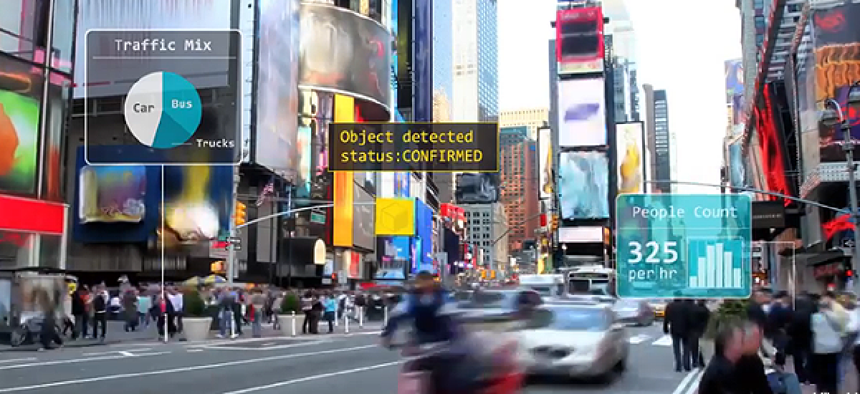Better security through video analytics


Connecting state and local government leaders
Using computer vision and advanced analytics, Hitachi’s video analytics software aims to improve privacy and decrease false positives.
The “see something, say something” campaign could one day be a quaint reminder of cities’ reliance on personal observations for identifying suspicious behavior. Before long, humans could be out of the surveillance equation because sophisticated networks will alert authorities of unusual packages, intruders or even an Uber that is double parked.
Such a public safety solution would be possible through a robust video analytics solution that can make sense of massive amounts of data from the internet of things.
“With the onset of computer vision and machine learning, video has really become a source of IoT data: a wealth of different insights and alerts that can help us understand what’s happening in the world around us,” said Justin Bean, head of smart city solutions marketing for Hitachi Insight Group.
The company says its new technology, Hitachi Video Analytics, will be able to draw out more information from the images surveillance cameras are capturing. For Hitachi, video analytics capabilities fall into two categories: operational intelligence and security. Operational intelligence can count and track people in crowds, cars on the highway, shoppers in a mall and keep an eye on parking spaces. Security capabilities include intrusion detection and facial recognition.
So what would this look like in the wild? Bean said an end-to-end HVA system would be able to identify a suspicious package in an airport and alert the proper officials. If the package appears dangerous then the same system could use facial recognition to track the individual who left it. If the person parked in the airport lot, then could track the car using license plate recognition.
Besides helping cities enhance security, HVA can offer insights for smarter transportation, traffic and parking management. The system can discriminate between cars, truck and motorcycles, and identify the direction they are headed, Bean said. It can also track available parking and pedestrians on a sidewalk, so cities can plan new developments around foot traffic, he said.
HVA can also enhance video by switching from pixel analysis to particle analysis, which takes into account perspective, velocity, path deviation and travel distance to improve accuracy. The video enhancement can also filter out interference from snow and rain to deliver a clearer picture and decrease false positives.
All of these different capabilities are running code specifically developed for the application, Bean said, which helps Hitachi reduce false positives. While some video analytics systems use the same algorithms to count cars or recognize faces, Hitachi said its individualized code creates ensures more accurate results.
How much will HVA reduce false positives? “It depends on the specific deployment, so in general it's hard to say that it improves by X percent,” Bean said. Anthony Caputo, a regional director for solution architecture and design at Hitachi, said he has seen the system “improve accuracy 10 fold” in some instances.
To protect the privacy of constituents, HVA also features built-in identity protection that uses pixilation or color masking to blur the entire body, not just the face, of subjects. Additionally, the raw footage can only be accessed by individuals with proper security clearance using an access card and a PIN. Once the raw footage is accessed, the system tracks the user’s activity.
Hitachi plans on making HVA customer announcements in March.
NEXT STORY: Digital transformation via low-code options




